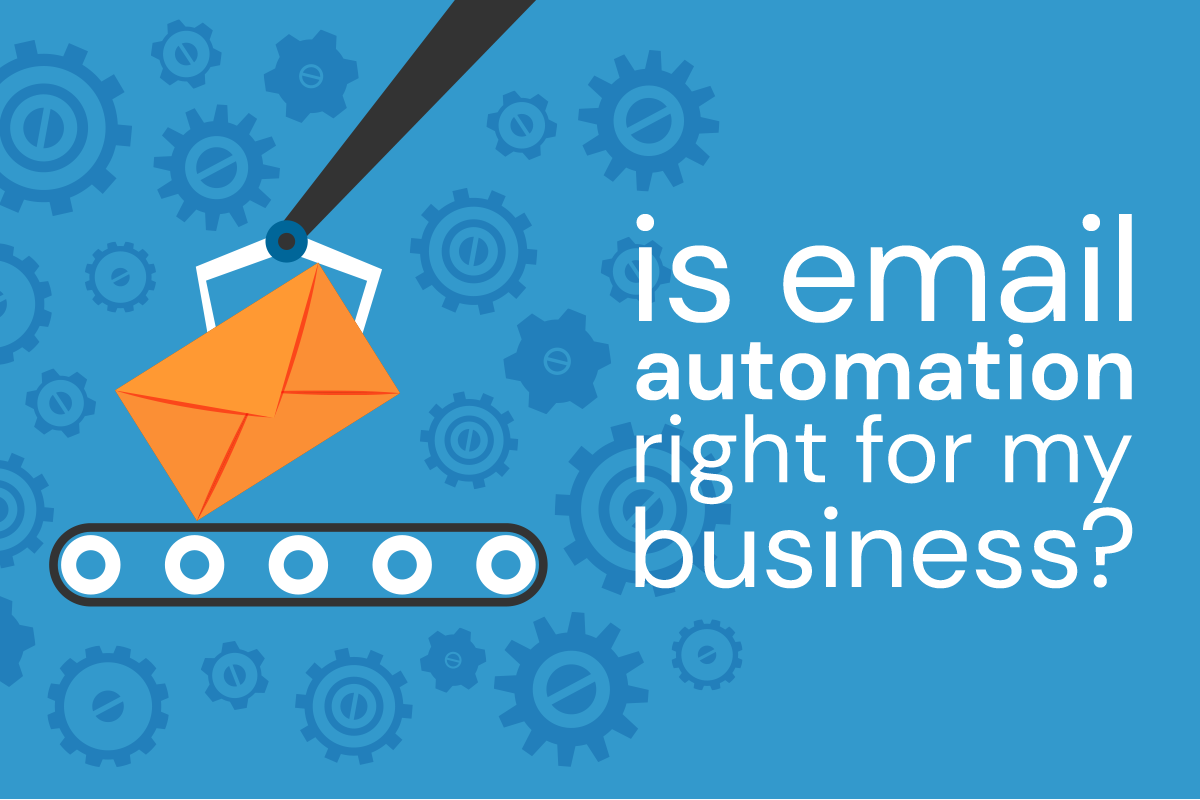Email automation seems to be the phrase on everyone’s lips right now. New automated email applications are popping up everywhere. And Mailchimp, a small-business favorite for designing and sending email newsletters, has just started offering their automation feature for free.
Along with these new opportunities, there’s a lot of curiosity about how different kinds of businesses can use email automation to improve communication with their customers and increase sales. And while automation is a great solution for many businesses, the way you’ll want to use it depends on what kind of products or services you provide.
Weekly Newsletters vs. Automated Emails
You may already have a regularly-scheduled email newsletter that you send to your customers on a weekly or monthly basis. Many businesses communicate in the same way—typically everyone on the email list receives identical information.
On the other hand, automated emails are triggered by a specific action taken by an individual email subscriber. That action could be anything from signing up for an email list, making a purchase, or clicking on a link in another email.
It’s hard to imagine how an automated email campaign might work for certain types of businesses, but there are hundreds of ways you could make use of them. Let’s take the restaurant business for example…
Business Lunches vs. Romantic Nights Out
Imagine you’re the owner of an Italian restaurant. Each week you send a newsletter to everyone on your list. This week, that broadcast email includes three different links: one to a list of weekday lunch specials, one promoting a fancy prix-fixe Valentine’s Day dinner, and one link to your happy hour specials.
Let’s assume a customer who clicks on the lunch specials link might be the type who conducts business over lunch. You could easily take advantage of that information by setting up an automation that sends those customers an email about your restaurant’s private room, available for meetings of five or more people.
To the customer who clicks on the happy hour link, you might send a promotion for your monthly wine tasting event.
As for the individual who followed the link to the Valentine’s Day menu, you would be sure to follow up in a few days to promote the live jazz trio performing every Saturday (i.e. date night).
How Do You Do vs. Let Me Help You
Automated email campaigns can vary in their complexity. We’ve seen everything from a simple three-email welcome sequence to a series with multiple triggers that result in 100-plus, finely tuned variations. How many emails you work into your automated campaign will depend on the type of business you do.
For almost any business, it’s a good idea to have a welcome series ready to go. You want a new lead to feel wanted. You certainly want a first-time customer to become a repeat customer. It makes sense to give newcomers an idea of who you are and how you can help them. Most of all, it’s just good manners.
More complex automations build on the polite “hello” of the welcome series. Their aim is to create a more intimate relationship with your customer by demonstrating that you understand what that particular customer’s needs.
The difference between a welcome series and segmented email automations is a lot like the difference between getting an Amazon gift certificate from your uncle and getting the perfect gift from your best friend. And who wouldn’t want their customers to get that How-did-you-know-it’s-exactly-what-I-wanted feeling each time they open an email from you?
How you choose to use automated email will depend on what kind of business you are in, the size of your business, and the size of your email list. Regardless of how complex your automated campaigns are, the important thing is to make each customer feel understood. Because that’s the kind of connection that ultimately leads to more and better business for you in the future.






